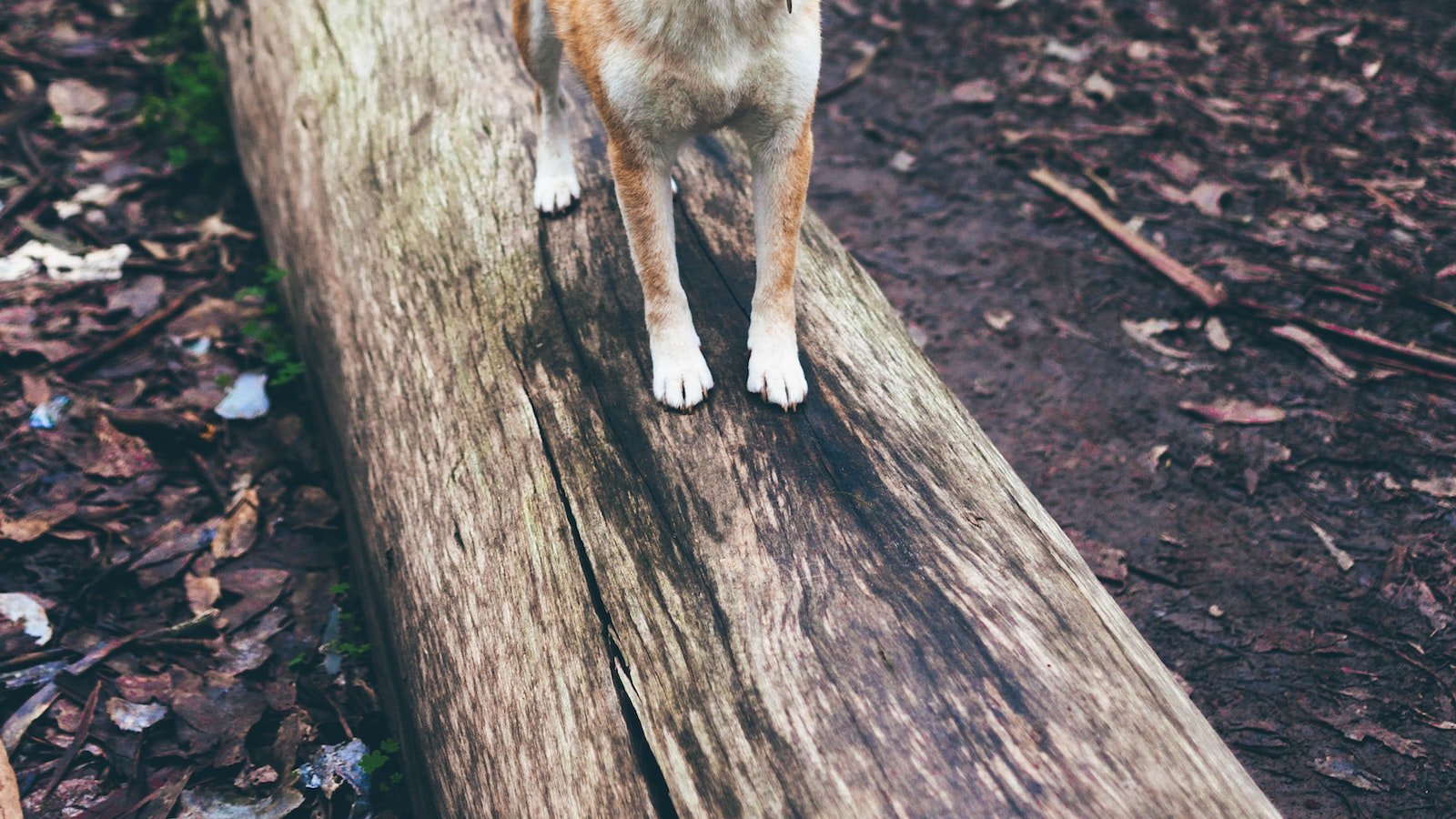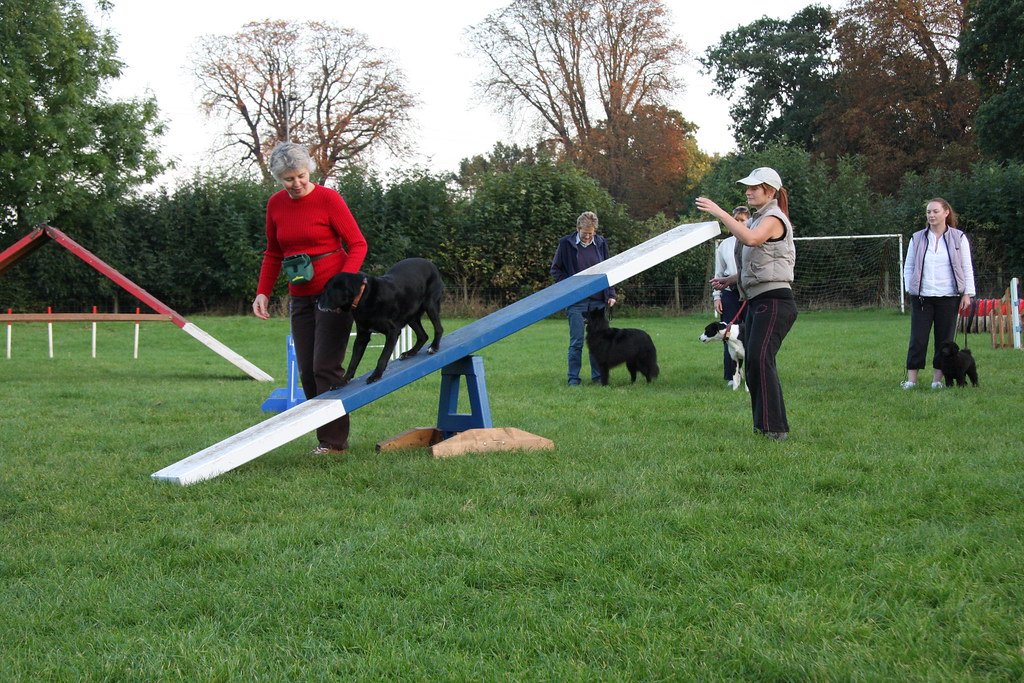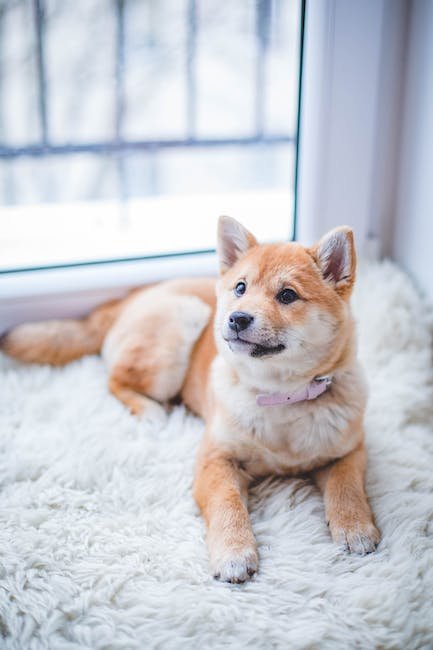Get ready to elevate your dog’s agility training to new heights! If you’re looking to add an exciting challenge to your furry friend’s repertoire, incorporating a dog training see-saw into their routine is a fantastic idea. This vibrant and interactive piece of equipment sparks curiosity, cultivates balance, and enhances coordination skills in your canine companion. In this article, we’ll show you exactly how to harness the power of a dog training see-saw to elevate your pup’s agility game, making training sessions exhilarating for both you and your four-legged friend. So strap in, grab some treats, and let’s get ready to rock and roll on the canine see-saw adventure!
Table of Contents
- Introduction to Dog Training See-Saw for Agility
- Understanding the Mechanics and Design of a Dog Training See-Saw
- Mastering the Step-by-Step Training Process for the Dog Training See-Saw
- Fine-Tuning Your Dog’s Agility Skills on the See-Saw
- Safety Precautions and Best Practices for Using a Dog Training See-Saw
- Q&A
- In Summary

Introduction to Dog Training See-Saw for Agility
Are you looking to level up your dog’s agility skills? The dog training see-saw is a fantastic tool to add to your training repertoire. This dynamic and challenging obstacle is a staple in agility competitions and can help your furry friend develop balance, confidence, and precision.
Before introducing your dog to the see-saw, it’s important to ensure they have a solid foundation in basic obedience commands. This will make the training process smoother and more effective. Start by familiarizing your canine companion with the seesaw’s structure and gradually guide them through the training steps.
Here are some key tips to keep in mind as you embark on your see-saw training journey:
- Start with low and stable surfaces, gradually increasing the height as your dog gains confidence and coordination.
- Use treats and positive reinforcement to motivate your dog and create a positive association with the see-saw.
- Break the training process into smaller steps, such as getting your dog comfortable with standing on the see-saw, then walking, and finally progressing to full see-saw movement.
- Always prioritize safety by supervising your dog during training and ensuring the see-saw is securely anchored.
With patience, consistency, and a little bit of fun, your dog will soon conquer the see-saw with flying colors. Get ready to impress onlookers and take your dog’s agility training to new heights!

Understanding the Mechanics and Design of a Dog Training See-Saw
When it comes to training our furry canine friends, the tool known as a dog training see-saw can be an invaluable asset. This device, also known as a teeter-totter, helps dogs develop balance, focus, and coordination while building trust and confidence. Let’s take a closer look at the mechanics and design elements that make this training tool effective.
- Balance: The see-saw is designed to pivot on a fulcrum, allowing it to move back and forth. This motion challenges the dog to maintain balance while crossing from one end to the other. It encourages the dog to use their core muscles and improves their proprioception, making them more agile overall.
- Focus: The see-saw’s length can be adjusted to cater to dogs of different sizes and skill levels. By gradually increasing the height and difficulty of the incline, the dog learns to concentrate on the task at hand and becomes more attentive to their handler’s commands.
- Coordination: As the dog navigates the see-saw, they must coordinate their movements to control their speed and balance. This helps them enhance their motor skills and develop better body control, which is beneficial for various training exercises and even everyday activities.
The design of a dog training see-saw is carefully crafted to ensure maximum safety and effectiveness. Sturdy materials such as durable wood or metal are used to construct a stable frame, capable of supporting the weight and movements of the dog. The surface of the see-saw is usually covered with a non-slip material, preventing any accidental slips or injuries.

Mastering the Step-by-Step Training Process for the Dog Training See-Saw
Training your dog to conquer the see-saw can be both a rewarding and challenging process. With a step-by-step approach, patience, and consistency, your furry friend will soon master this fun and confidence-building agility obstacle. Follow these essential steps to ensure a successful training process:
- Establish trust: Start by creating a positive and safe environment for your dog. Introduce them to the see-saw by allowing them to explore and sniff it. Reward any positive interactions with treats and praise to build trust and familiarity.
- Stage-by-stage introduction: Break the training process into manageable stages to avoid overwhelming your dog. Begin by teaching them how to climb onto the stationary end of the see-saw and reward them for each successful attempt. Gradually progress to teaching them to walk across and finally to the tipping end.
- Encourage confidence: Dogs can be hesitant to step onto a moving surface. Encourage your furry companion by using treats and positive reinforcement to show them that stepping onto the see-saw is a rewarding experience. Gradually increase the motion until they are comfortable with the see-saw’s movement.
Remember, each dog learns at its own pace, so be patient and adapt your training techniques to suit their individual needs. By breaking the process into smaller steps and providing motivation and encouragement, you’ll soon see your dog confidently conquering the see-saw!

Fine-Tuning Your Dog’s Agility Skills on the See-Saw
Mastering the see-saw is a crucial skill for any well-rounded canine agility athlete. It requires balance, coordination, and precision. To help your furry friend excel on the see-saw, try these tips:
- Start with the basics: Begin by introducing your dog to the see-saw in a controlled environment. Allow them to explore and familiarize themselves with the structure. Encourage them to walk across the board using treats and positive reinforcement, building their confidence step by step.
- Focus on balance: As your dog becomes more comfortable, work on their balance. Encourage them to pause at different points on the see-saw to develop their core strength. This will help them maintain control and prevent sudden movements that may throw them off balance during agility trials.
- Introduce movement: Once your dog has mastered the stationary see-saw, gradually introduce movement. Start with light rocking motions and increase the amplitude over time. Use a leash or guide them with your hand to ensure a smooth ride. This will build their trust and help them become comfortable with the see-saw’s dynamic nature.
- Practice varied scenarios: As your dog becomes more confident on the see-saw, it’s essential to expose them to different scenarios they may encounter during competitions. Set up distractions, such as noise or obstacles, to simulate real-life challenges. This will strengthen their focus and ability to perform under different conditions.
Remember, patience and positive reinforcement are key when . By following these techniques, you’ll be well on your way to unleashing your dog’s potential and achieving remarkable agility success!
Safety Precautions and Best Practices for Using a Dog Training See-Saw
When it comes to training your beloved canine companion, a dog training see-saw can be a valuable tool. However, it is crucial to prioritize safety to ensure a positive and effective training experience. Here are some essential safety precautions and best practices to keep in mind:
- Introduce the see-saw gradually: Start by allowing your dog to become familiar with the see-saw without any movement. Encourage them to explore it at their own pace, using positive reinforcement to create a positive association.
- Proper supervision: Always closely supervise your dog when they are on the see-saw. This not only allows you to ensure their safety but also enables you to correct any improper behavior or potential self-harm.
- Correct sizing and positioning: It is vital to choose a see-saw that suits your dog’s size and weight. A see-saw that is too large or too small may lead to accidents or discomfort during training sessions. Additionally, position the see-saw on a stable and level surface to minimize the risk of tipping or wobbling.
- Gradual movement: Once your dog is comfortable with the stationary see-saw, you can introduce gentle rocking motion. Start slowly and gradually increase the movement to ensure your dog’s confidence and prevent any fear or anxiety.
- Patience and positive reinforcement: Training takes time and patience. Always use positive reinforcement techniques, such as treats and praise, to reward your dog for their progress. This will foster a positive learning environment and strengthen the bond between you and your furry friend.
By following these safety precautions and best practices, you can create a safe and enjoyable training experience for both you and your dog. Remember, their safety and comfort should always be your top priority!
Q&A
How do I introduce my dog to a training see-saw?
Start by letting your dog explore the see-saw without making any movements. Reward them for approaching and sniffing it. Gradually introduce movement by having your dog walk on the see-saw while you hold the other end steady.
What should I do if my dog is afraid of the training see-saw?
Patience is key. Start by rewarding your dog for simply looking at the see-saw. Then, work on building positive associations by feeding them treats near the see-saw. Gradually move the treats closer to the see-saw, helping your dog overcome their fear at their own pace.
How can I teach my dog to balance properly on the see-saw?
Initially, start with a low-angle see-saw and have your dog walk toward the high end to encourage balancing. Reward them for staying balanced by offering treats upon completion. Gradually increase the angle of the see-saw as your dog becomes more confident.
What’s the best way to teach my dog to use the see-saw with speed?
To teach speed, start by using a slightly inclined see-saw. Use a command like “up” or “hup,” and associate it with running up and down the see-saw. Reward your dog with praise and treats for successfully completing the task at a faster pace.
Are there any safety precautions I should take when training my dog on a see-saw?
Always ensure the see-saw is stable and properly set up before each training session. Start with low angles and gradually increase them to avoid potential injuries. It’s crucial to closely supervise your dog during training and consult a professional if any doubts or safety concerns arise.
In Summary
As we bring this thrilling journey to a close, it’s time to bid adieu to the captivating world of dog training see-saws for agility. Like a symphony of harmony between canine and human, we have unraveled the secrets of this exhilarating training tool and discovered the boundless potential that lies within our four-legged companions.
From the early stages of introducing our furry friends to the mighty see-saw, we witnessed the transformation of uncertainty into confidence. Step by step, paw by paw, the once daunting obstacle transformed into a gateway of unlimited possibilities. Through patience, diligence, and a touch of magic, we witnessed the triumph of teamwork and the blossoming of trust.
Throughout this odyssey of skill and balance, we discovered the beauty of communication. The subtle cues, the synchrony, and the unspoken language formed an unbreakable bond between us and our loyal companions. In this twist and turn of agility, it was not only the dogs’ muscles that grew stronger, but the invisible thread connecting our hearts.
Remember, dear readers, that in the realm of training, obstacles are not merely physical challenges but opportunities for growth. As we traversed the realms of wobble and precision, we found that victory was not measured solely by speed and agility, but by the unwavering connection built through dedication and love.
Now, armed with the knowledge imparted by this remarkable journey, it is time to bid farewell. Go forth into the world of dog training with renewed fervor and an unyielding commitment to making the impossible, possible. Embrace the marvel of the dog training see-saw and let it unlock a universe of limitless potential within your beloved companion.
May the see-saw be your guiding star, and may your paws dance gracefully through the obstacles that lie ahead. Go forth, dear reader, and may your canine partner soar to unimaginable heights of agility and joy.
As an affiliate, my content may feature links to products I personally use and recommend. By taking action, like subscribing or making a purchase, you’ll be supporting my work and fueling my taco cravings at the same time. Win-win, right?
Want to read more? Check out our Affiliate Disclosure page.